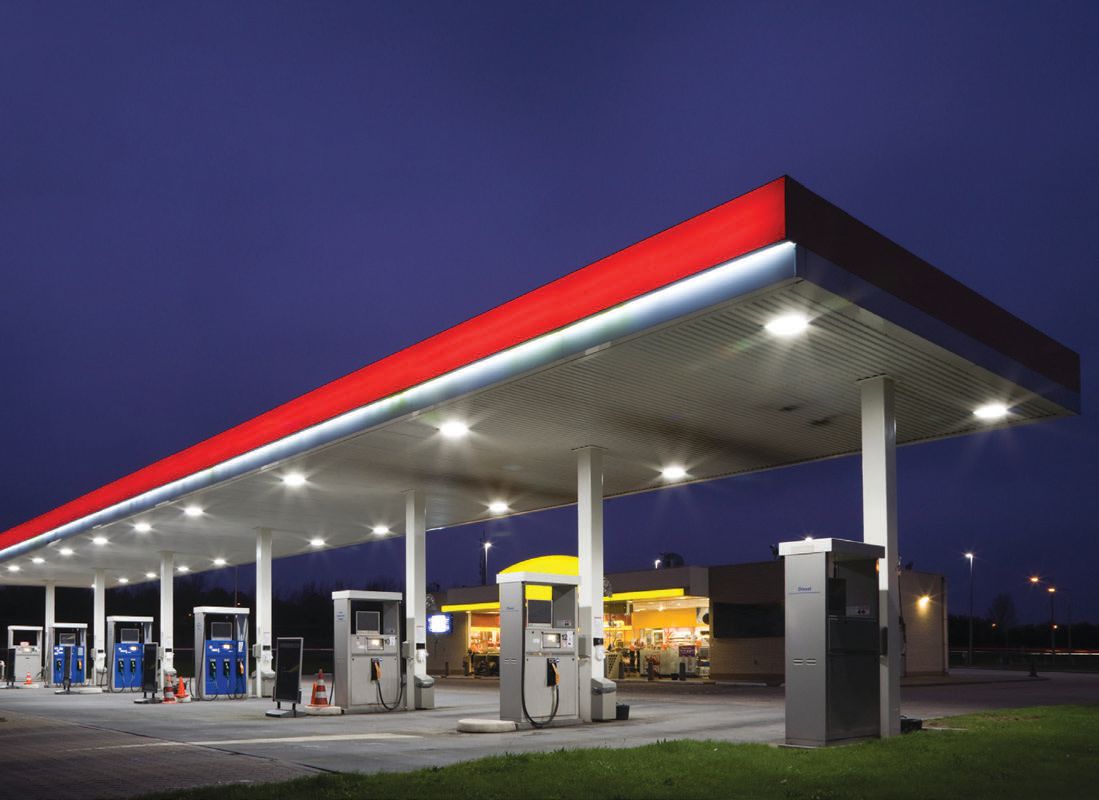GTL base oils
R. David Whitby | TLT Worldwide November 2015
Enhancements are likely to be of significant value to automotive lubricant formulators.

GTL processes produce mixtures of hydrocarbon liquids and waxes, from which it is possible to manufacture almost exclusively naphtha and diesel (gas oil).
© Can Stock Photo Inc. / erikdegraaf
PROCESSES FOR CONVERTING NATURAL GAS INTO LIQUIDS, mainly methanol, have been used for more than 75 years but have gained considerably more attention during the last 20 years. The main focus of recent attention has been to produce transportation fuels (gasoline and diesel) from the ever-growing surplus of gas. The current and forecast surplus of gas over crude oil has arisen due to the cumulative effects of gas reinjection into oil wells to enhance crude production and because more gas than oil is now being found. The gas that has been reinjected into oil fields during the last 30 or more years is now being reproduced in ever increasing amounts.
Gas-to-liquids (GTL) processes produce mixtures of hydrocarbon liquids and waxes from which it is possible to manufacture almost exclusively naphtha and diesel (gas oil). These fuels contain virtually no sulphur or nitrogen compounds. Since very low (<10 ppm) sulphur gasoline and diesel fuels have been mandatory in Western Europe and North America since the beginning of 2005, a few GTL plants have been built to produce larger quantities of these fuels.
In addition, GTL processes can be made to hydroisomerise the waxes to produce heavier liquids in the lubricant base oil range of viscosities. Since the base oils produced also are very low in sulphur, as well as having very high viscosity index (VI) and excellent oxidative and thermal stabilities, more attention is being paid to the future use of GTL processes to produce combinations of fuels and base oils.
Very little published data exists on the properties and performance of GTL base oils, so it is very difficult at present to compare them accurately with alternative high-performance base oils. The only current sources of GTL base oils is Shell, from the waxes produced in plants in Qatar and Bintulu (Malaysia). Shell sells only the low viscosity (3 cSt) base oils to the market, so the precise properties of the higher viscosity (4 cSt and 6 cSt) base oils are known only to Shell.
PetroTrends has published a comparison of “high-performance” base oils, indicating that GTL performance is close to that of PAO (Group IV). Pathmaster Marketing also has obtained unpublished data on the properties of FT base oils from a number of industry sources. From the limited data available, Pathmaster Marketing has compiled tables of comparative data for 4 cSt and 8 cSt Group III+, Group IV and GTL base oils.
For both viscosity grades, the GTL base oil has a much higher VI than the comparative PAO, so it can be used to formulate multigrade viscosity lubricants that contain much lower amounts of VI improver(s). This also is true for the comparative Group III+ base oil. This property of GTL base oils could significantly enhance the long-term oxidation stability and stay-in-grade viscosity performances of extended drain interval gasoline and diesel engine oils. These enhancements are likely to be of significant value to automotive lubricant formulators.
However, GTL processes to make low sulphur fuels are only economic at very large scales (50,000 bpd or more) and with comparatively low natural gas feedstock prices. The places in which there are large volumes of low-priced gas, sufficient to justify a 20-year investment in a GTL plant, tend to be in countries where there are no or few pipeline networks for the gas. Despite the impact of shale gas in North America, the 2015 BP Review of World Energy indicates that the reserves to production ratio for natural gas in the U.S. is only 13 years, not enough to support a GTL plant. Prices for natural gas in Europe and Asia are too high to make GTL plants economic.
More important, improvements in the energy efficiencies of liquefied natural gas (LNG) processes mean that it is more cost effective to build an LNG plant and ship gas in special tankers than it is to build a GTL plant and ship liquid fuels. In 2008, for example, ExxonMobil decided not to build a proposed GTL plant in Qatar, opting instead to build an LNG plant.
For these reasons, I believe that GTL plants, particularly ones designed to make fuels, waxes and base oils, are likely to be very difficult to justify economically in the future in many countries.
 David Whitby is chief executive of Pathmaster Marketing Ltd. in Surrey, England. You can reach him at pathmaster.marketing@yahoo.co.uk
David Whitby is chief executive of Pathmaster Marketing Ltd. in Surrey, England. You can reach him at pathmaster.marketing@yahoo.co.uk.